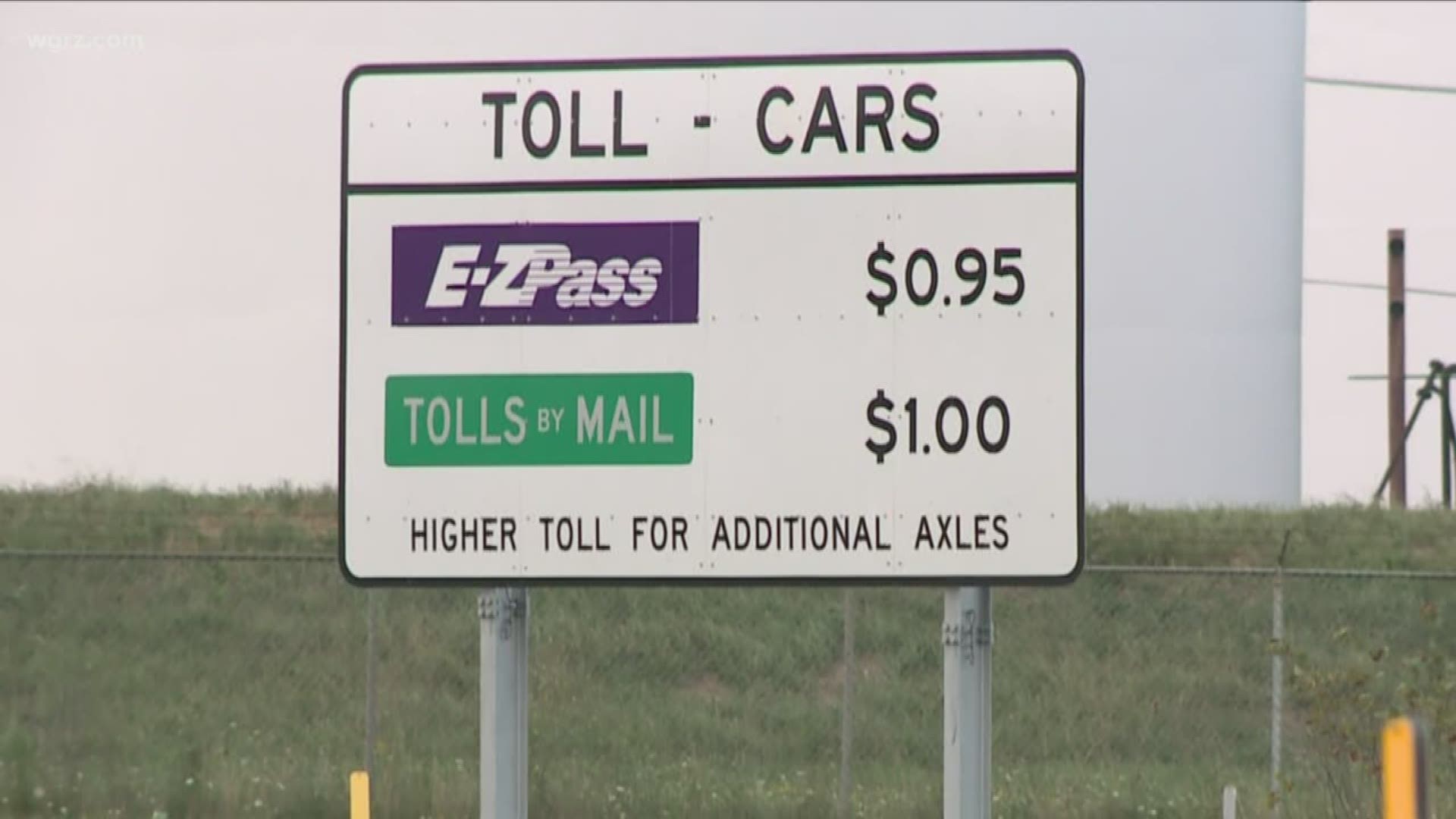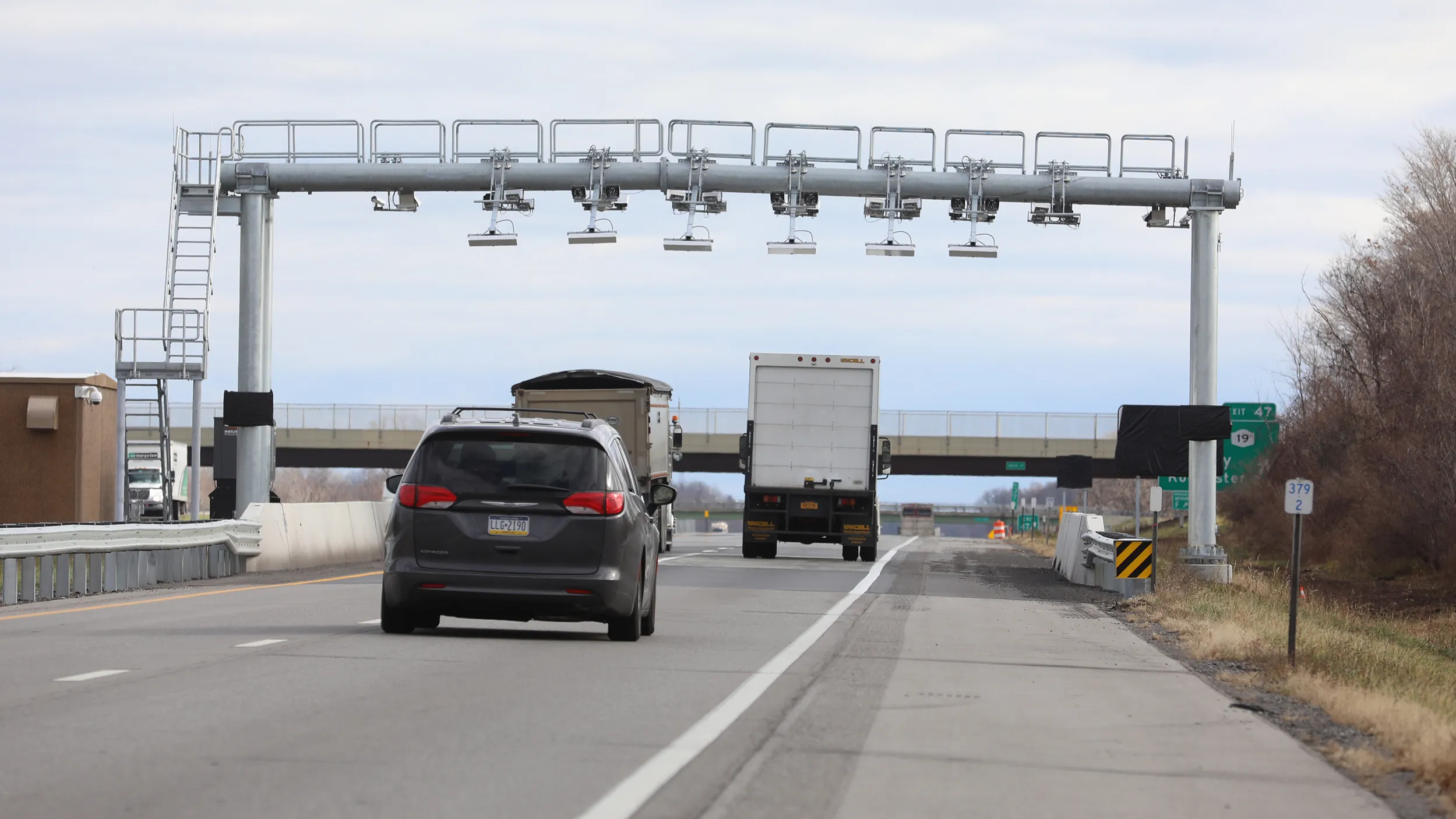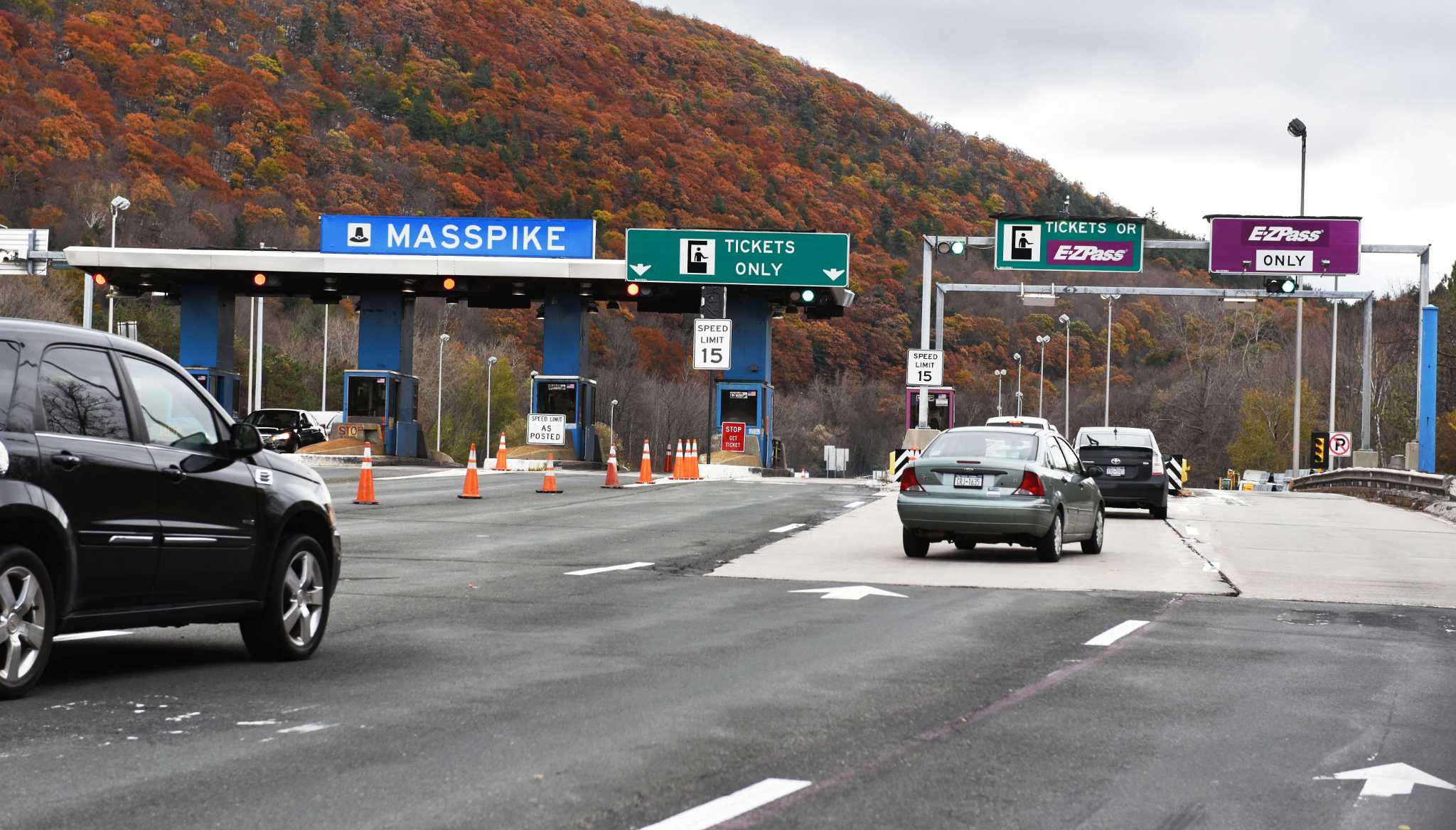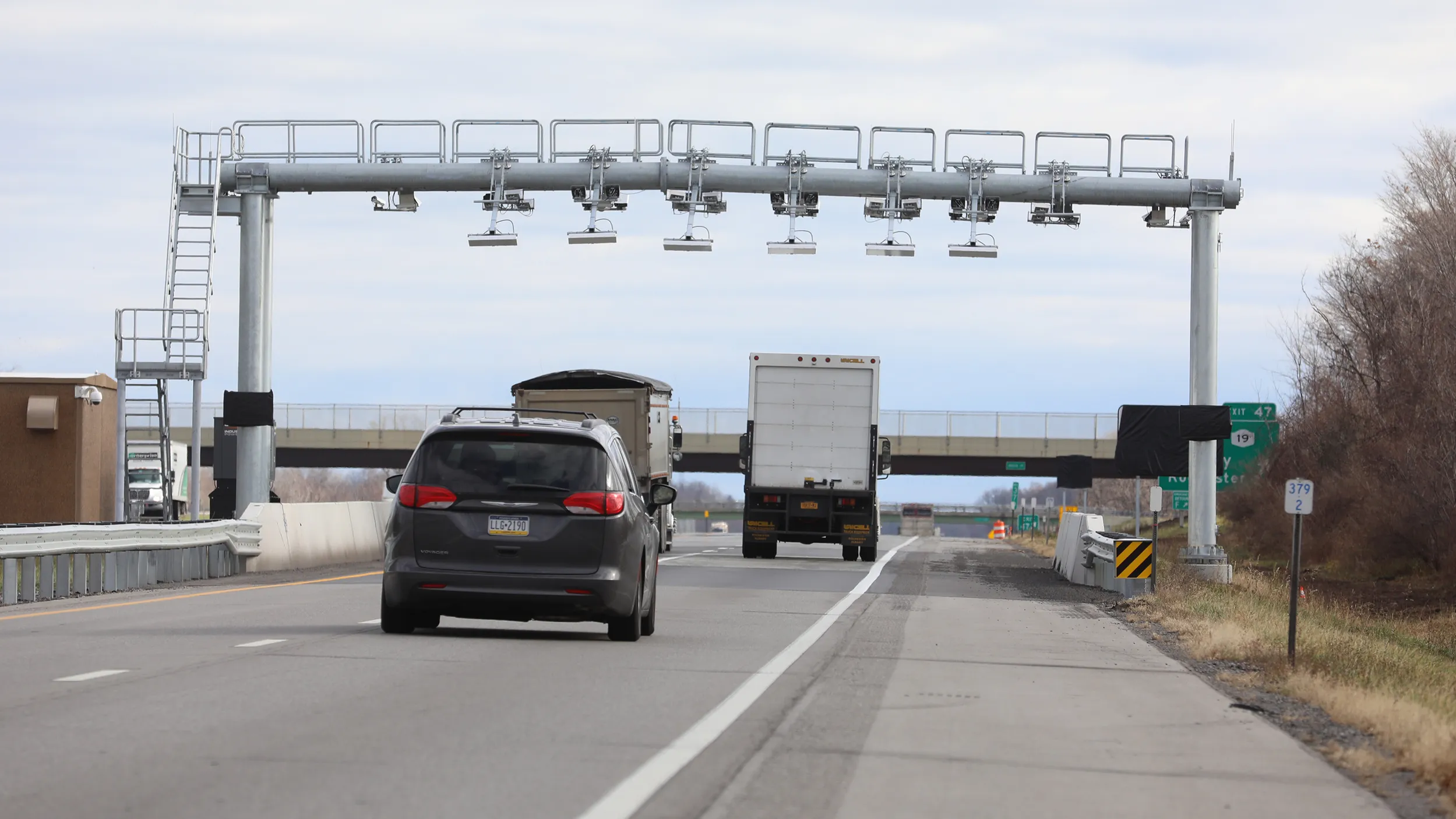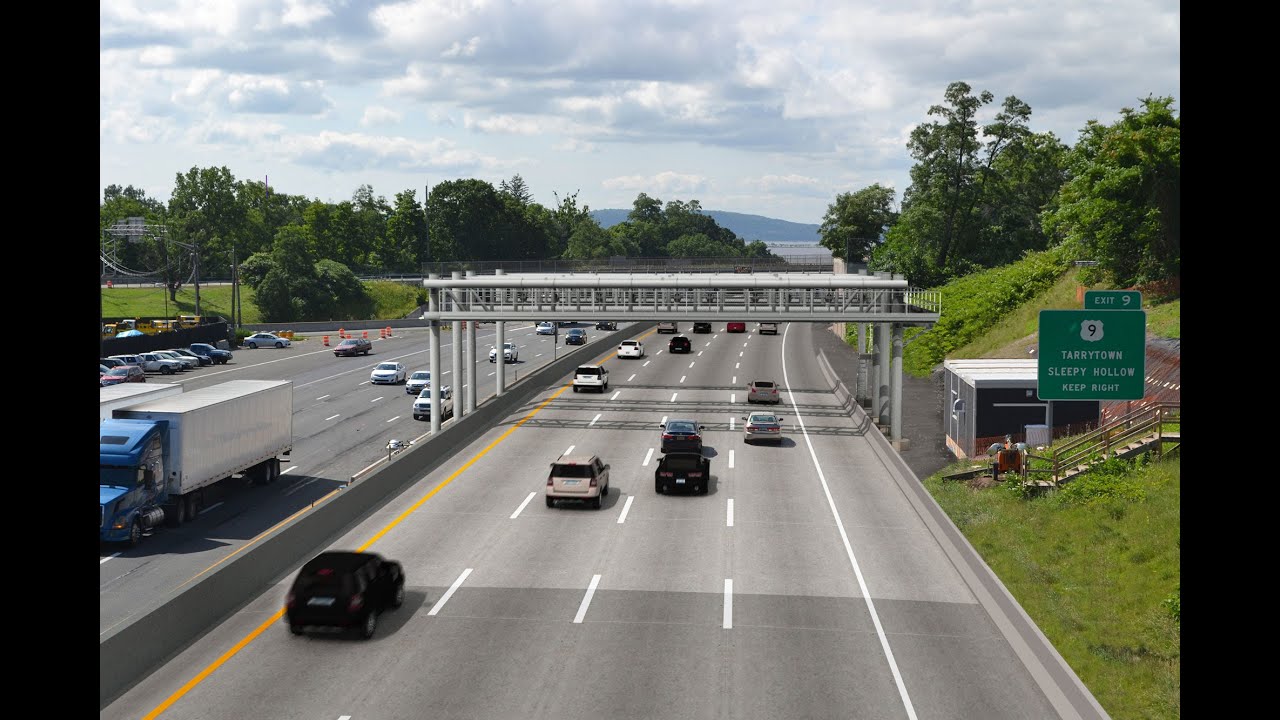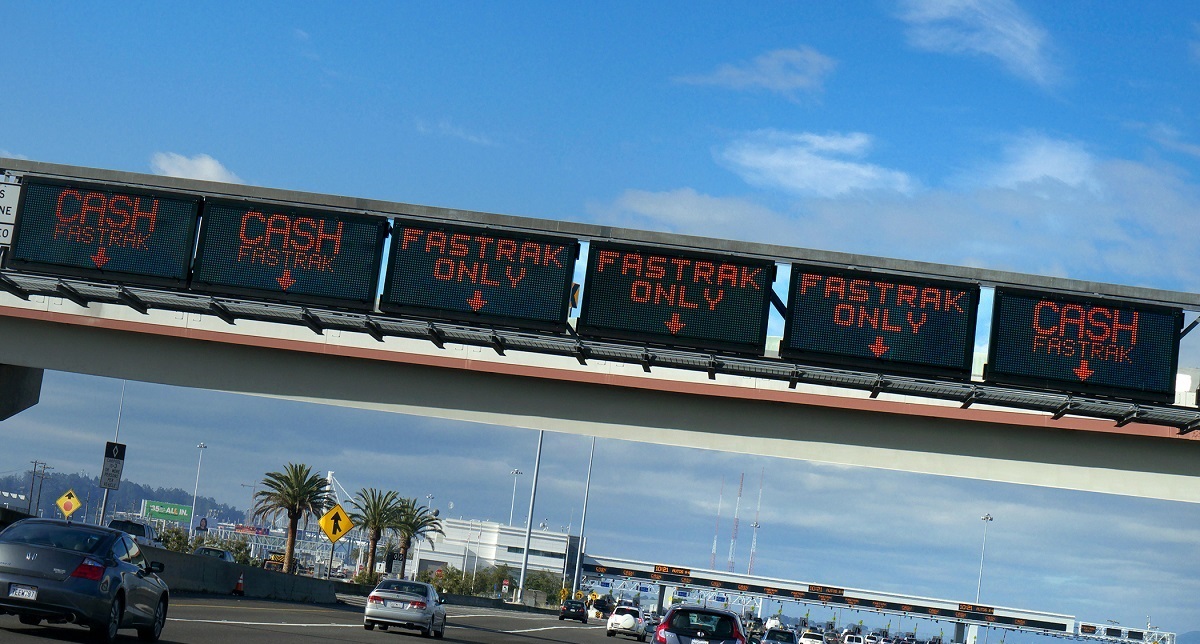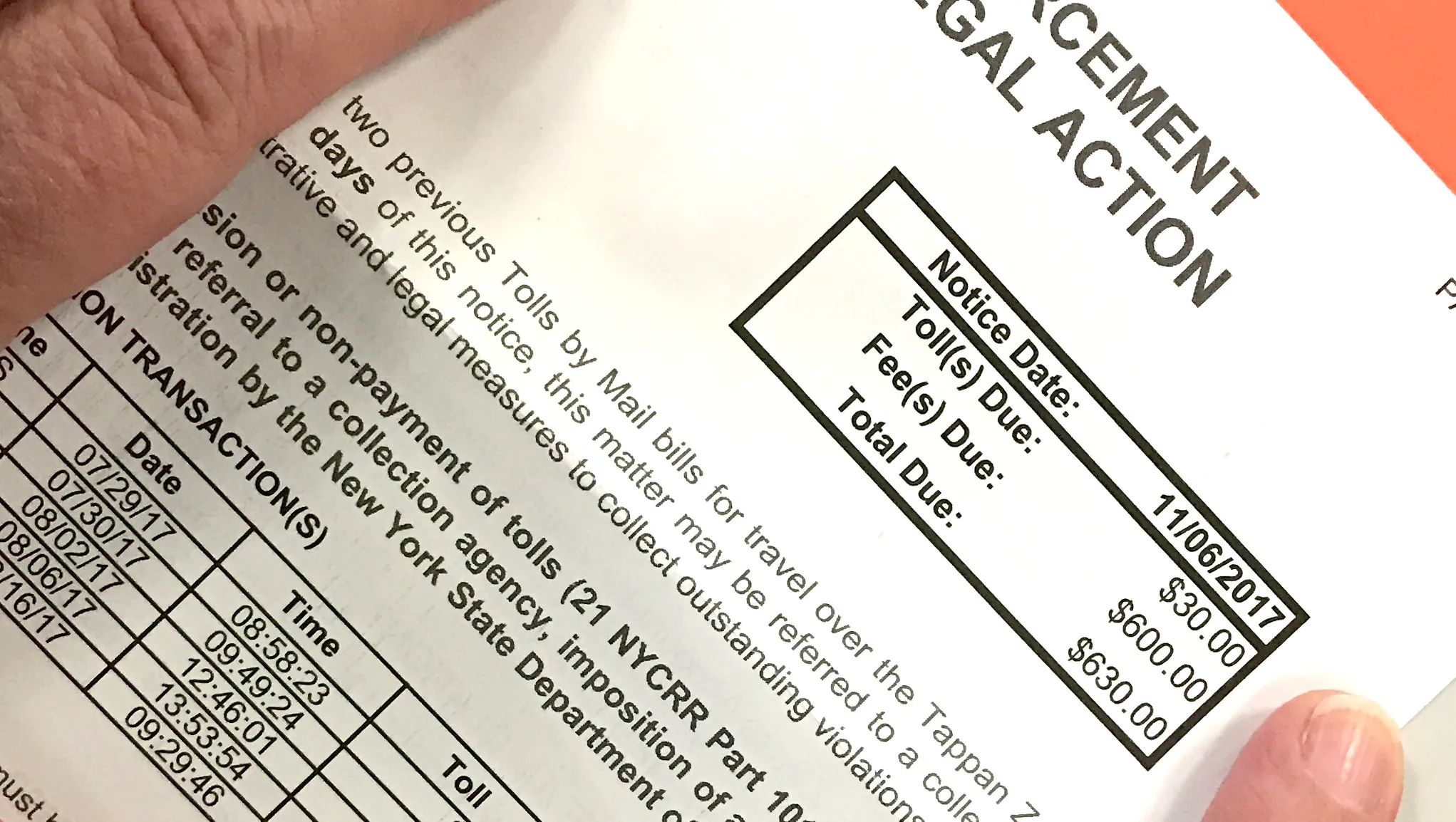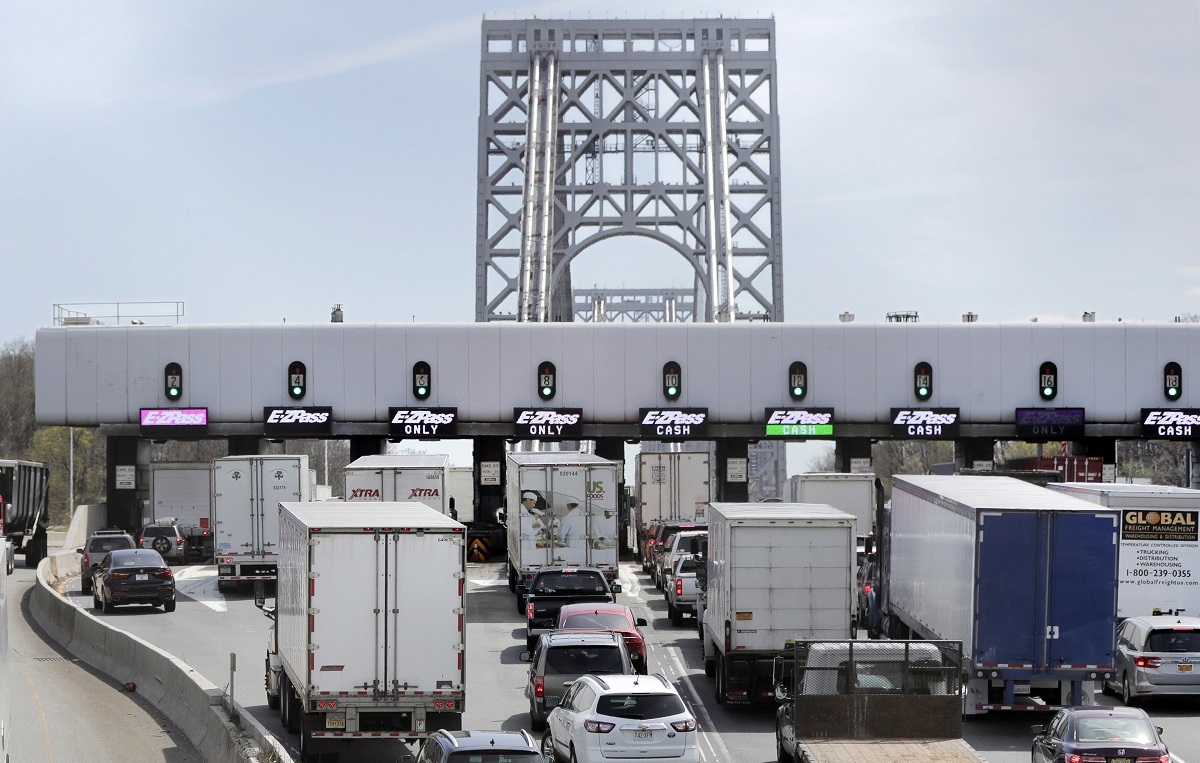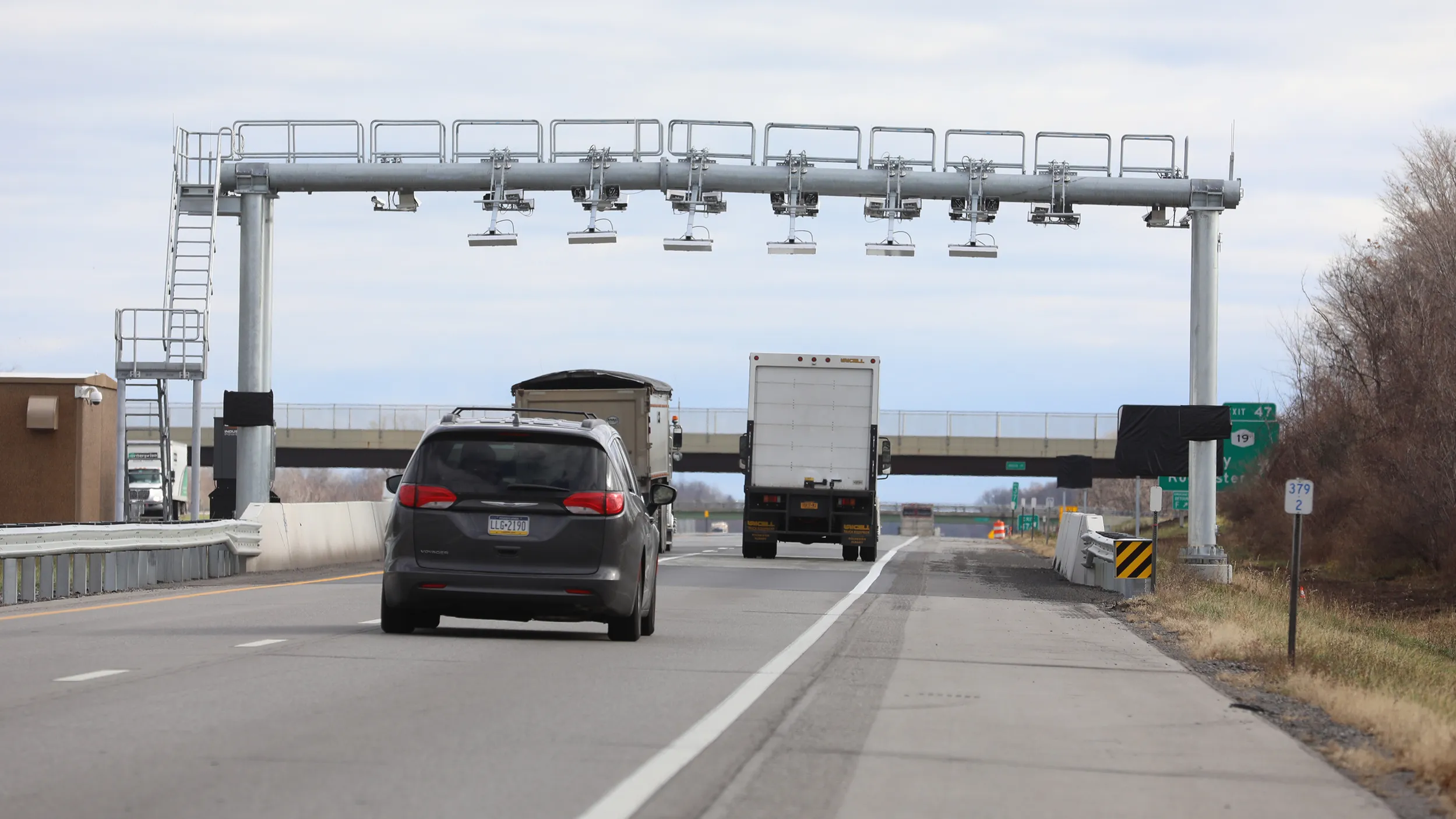What is Cashless Tolling?
Cashless tolling is a modern electronic system used to collect tolls on highways, bridges, and tunnels without the need for physical payment at a toll booth. Instead of stopping and handing over cash or using a toll ticket, drivers can pass through designated tolling points at regular driving speeds.
This innovative technology has gained popularity in recent years due to its efficiency and convenience for both drivers and toll authorities. By eliminating the need for cash transactions and toll booths, cashless tolling minimizes traffic congestion, reduces travel time, and enhances overall road safety.
With cashless tolling, drivers can enjoy a seamless travel experience as they no longer have to fumble for loose change or waste time waiting in long queues. All transactions are linked to their vehicle’s license plate, which is captured by high-tech cameras or electronic transponders installed in the tolling infrastructure.
Once the driver passes through a cashless tolling point, their toll is automatically recorded, and the payment is processed electronically. Depending on the specific tolling system in place, the toll charges may be deducted from a pre-paid account associated with a transponder, or billed to the vehicle owner’s registered address.
In recent years, cashless tolling has gained prominence across the United States as an effective method for improving traffic flow and reducing congestion. Many states and municipalities have implemented such systems on major highways and bridges, making it easier and more efficient for drivers to travel.
It’s important to note that cashless tolling does not mean toll-free travel. Motorists still have the responsibility to pay their tolls, either through automatic deductions or receiving bills. Failure to pay tolls promptly may result in penalties or fines, so it is essential for drivers to understand the specifics of the cashless tolling system they are using.
In the next section, we will delve deeper into the mechanics of how cashless tolling works and the various factors that determine the cost of using these electronic tolling systems.
How Does Cashless Tolling Work?
Cashless tolling involves a sophisticated combination of technology and infrastructure to facilitate seamless toll collection without the need for physical payment. The process can vary slightly depending on the specific system in place, but the general mechanics of cashless tolling follow a similar pattern.
When approaching a cashless tolling point, drivers will typically encounter overhead gantries equipped with high-tech cameras or electronic readers. These gantries are strategically placed to capture the license plates of passing vehicles or read the information from a transponder mounted on the windshield.
If the driver has an electronic transponder linked to a prepaid account, the system automatically deducts the appropriate toll amount from the account balance. Transponders work through radio frequency identification (RFID) technology, allowing the tolling system to identify the vehicle and deduct the toll amount in real-time without any manual intervention from the driver.
For drivers without a transponder, the cashless tolling system relies on image capture technology to record the vehicle’s license plate. The system then matches the license plate information with the registered owner of the vehicle and sends them a toll bill based on the applicable rates.
In some cases, drivers may have the option to sign up for an account where their license plate is registered. With this account, the toll charges are deducted automatically, much like with a transponder. This option provides convenience for frequent users of cashless tolling systems.
Once the toll is collected through either the transponder or license plate recognition, drivers are typically provided with electronic receipts or can view their toll activity through online portals or mobile applications. This allows them to keep track of their toll expenses and ensure accurate billing.
It’s worth noting that the specific processes and technologies used for cashless tolling can vary across different states and jurisdictions. Some systems may use a combination of transponders, license plate recognition, or other advanced technologies to facilitate toll collection.
In the next section, we will explore the various factors that determine the cost of cashless tolling, helping drivers better understand the expenses associated with using these electronic tolling systems.
Factors that Determine the Cost of Cashless Tolling
The cost of cashless tolling is influenced by various factors that can vary depending on the specific tolling system and location. Understanding these factors is essential for drivers to effectively budget for their toll expenses. Here are some key factors that determine the cost of cashless tolling:
1. Distance Traveled: One of the primary factors influencing toll costs is the distance traveled on a particular stretch of road or bridge. Toll rates are often structured based on different zones or segments, with higher rates for longer distances. Drivers can expect to pay more if they travel a greater distance using cashless tolling.
2. Vehicle Type: Toll rates can also vary based on the type of vehicle, such as passenger cars, motorcycles, or commercial trucks. Commercial vehicles typically have higher toll rates due to their size and weight, which can put more strain on infrastructure and require additional maintenance.
3. Peak and Off-Peak Hours: Some cashless tolling systems implement dynamic pricing based on the time of day and traffic conditions, known as peak and off-peak pricing. During peak hours when traffic is heavy, toll rates may be higher to manage congestion, while off-peak hours may have lower rates to encourage travel during less busy times.
4. Electronic Payment Account: If drivers choose to link their cashless tolling account to a prepaid electronic payment account, they may be eligible for discounted rates or special promotions. These accounts often offer lower toll rates, providing an incentive for drivers to opt for electronic payments.
5. Residential or Commuter Status: In certain jurisdictions, residents or frequent commuters may be eligible for discounted toll rates or even toll-free access to particular roadways. These discounts are often offered to encourage local use and reduce traffic congestion on alternative routes. Proof of residency or regular commuting may be required to qualify for these discounts.
6. Time of Enrollment: Some cashless tolling systems offer initial enrollment discounts or incentives for new users. By signing up for a cashless tolling account during specific periods or promotions, drivers can often receive reduced or waived enrollment fees and even enjoy lower toll rates for a limited time.
It’s important for drivers to familiarize themselves with the specific tolling policies and regulations of the cashless tolling system they are using. This will ensure they have a clear understanding of the factors that contribute to their toll costs and help them plan their travel expenses accordingly.
In the next section, we will dive into the details of understanding tolling rates, including the different types of toll charges and how they are calculated.
Understanding Tolling Rates
Tolling rates play a vital role in determining the cost of using cashless tolling systems. Understanding how tolling rates are calculated is essential for drivers to estimate their expenses accurately. Here’s a breakdown of key factors related to tolling rates:
1. Flat Rates: Some cashless tolling systems utilize flat rates, where drivers are charged a fixed amount regardless of the distance traveled. These flat rates are often used for shorter toll crossings or specific highway segments. Flat rates provide simplicity and predictability in toll costs, making it easier for drivers to plan their budgets.
2. Distance-Based Rates: Many cashless tolling systems employ distance-based rates, where toll charges are calculated based on the distance traveled. These rates may vary depending on the specific zones or segments along the roadway. Longer distances typically result in higher toll costs, while shorter trips incur lower fees.
3. Vehicle Classifications: Toll rates can differ based on the classification of vehicles. Different classes, such as passenger cars, motorcycles, or commercial trucks, may have varying toll charges. This classification helps adjust the toll rates based on the size, weight, and usage patterns of the vehicles, ensuring a fair distribution of costs among different types of vehicles.
4. Time of Day Pricing: Some cashless tolling systems implement time-of-day pricing, also known as dynamic pricing or congestion pricing. During peak hours or times of heavy traffic, toll rates may increase to incentivize drivers to travel during off-peak hours or use alternative routes. This mechanism helps manage traffic flow and reduce congestion on heavily traveled roadways.
5. Toll Discounts and Exemptions: Certain tolling systems offer discounts or exemptions for specific groups of drivers. For example, frequent commuters or residents living near toll roads may be eligible for discounted rates or even toll-free access. Additionally, electronic payment accounts linked to toll transponders often offer discounted rates to encourage the use of cashless payment methods.
It’s important to note that tolling rates can vary significantly between different tolling authorities, states, and even specific roadways. Therefore, it is crucial for drivers to familiarize themselves with the tolling rate schedules of the specific cashless tolling system they are using. This helps them anticipate and budget for their toll expenses accurately.
In the next section, we will explore how toll costs are calculated in cashless tolling systems, providing drivers with insights into estimating their expenses.
Calculating Toll Costs
Calculating toll costs in cashless tolling systems involves considering the distance traveled, toll rates, and any applicable discounts or surcharges. Here’s an overview of how toll costs are typically calculated:
1. Distance-Based Calculation: In systems that utilize distance-based tolling, toll costs are determined by the distance traveled on a particular roadway or bridge. The tolling system divides the roadway into zones or segments, each with a specific toll rate associated. By multiplying the number of zones traveled by the corresponding toll rate, drivers can calculate the total toll cost for their journey.
2. Vehicle Classification: Vehicle classification plays a role in calculating toll costs. Different types of vehicles, such as passenger cars, motorcycles, or commercial trucks, may have varying toll rates based on their size and weight. It’s essential for drivers to know the classification of their vehicle and the associated toll rates to accurately estimate their toll costs.
3. Discounts and Exemptions: Some cashless tolling systems offer discounts or exemptions that can affect toll costs. Frequent commuters, residents, or vehicles with electronic payment accounts linked to transponders may be eligible for discounted rates. Additionally, some tolling authorities provide special rates for specific groups, such as military personnel or seniors. Factoring in any applicable discounts can result in lower overall toll costs.
4. Peak and Off-Peak Hours: Dynamic pricing or time-of-day pricing can impact toll costs. During peak hours of heavy traffic, toll rates may be higher to manage congestion. On the other hand, off-peak hours often have lower toll rates as an incentive for drivers to travel during less busy times. Knowing the peak and off-peak hour rates can help drivers plan their trips and potentially reduce toll costs.
5. Electronic Payment Accounts: Linking a cashless tolling account to a prepaid electronic payment account, such as an E-ZPass or FasTrak, can provide cost savings. These accounts often offer discounted rates compared to paying tolls individually. By pre-loading funds into the electronic payment account, drivers can streamline the toll payment process and potentially save on toll costs.
It’s important to note that toll costs can vary between different cashless tolling systems, states, and roadways. It’s advisable for drivers to consult the tolling authority’s website or contact customer support for specific information on toll rates and calculations in their area.
By considering the distance traveled, vehicle classification, applicable discounts, and other factors, drivers can estimate their toll costs and be prepared for the expenses associated with using cashless tolling systems.
Tips for Saving Money on Cashless Tolling
While cashless tolling offers convenience and efficiency, toll costs can add up, especially for frequent travelers. Here are some tips to help you save money on cashless tolling:
1. Research Toll Options: Before hitting the road, research the different tolling options available in your area. Compare the toll rates of various routes and be aware of any discounts or exemptions you may qualify for. Understanding the tolling landscape can help you choose the most cost-effective route for your journey.
2. Use Electronic Payment Accounts: Consider signing up for an electronic payment account, such as an E-ZPass or FasTrak, which often offer discounted toll rates. By using these pre-paid accounts, you can avoid higher toll fees associated with manual payment methods and save money over time.
3. Carpool or Use HOV Lanes: If eligible, carpooling or using High Occupancy Vehicle (HOV) lanes can help you save on toll costs. Many cashless tolling systems provide discounted or toll-free access to HOV lanes. Sharing the ride not only reduces your toll expenses but also helps alleviate traffic congestion.
4. Plan Off-Peak Travel: Utilize off-peak hours to your advantage by traveling when traffic is lighter and toll rates are typically lower. Planning your trips outside of peak rush hours can help you save money, as tolls may be reduced during less busy times of the day.
5. Plan Ahead for Toll-Free Routes: Some roadways or bridges offer toll-free alternatives nearby. Planning your route in advance and understanding the toll-free options can help you avoid tolls altogether and save money on your journey.
6. Maintain Your Transponder: If you use a transponder for toll payment, make sure it is in proper working condition. Check the battery life, ensure it is mounted correctly, and update the account associated with the transponder whenever necessary. This ensures accurate toll detection and avoids any potential billing issues.
7. Keep Track of Your Toll Usage: Regularly review your toll receipts, statements, or account activity to ensure accurate billing. Check for any discrepancies or errors that may result in incorrect toll charges. By staying vigilant, you can avoid overpaying for tolls and quickly resolve any billing concerns.
8. Explore Toll Pass programs: Some cashless tolling systems offer Toll Pass programs for frequent travelers. These programs provide discounted rates, monthly caps, or unlimited usage options that can save you money if you frequently use tolled roadways.
By following these tips, you can optimize your cashless tolling experience and keep your toll costs in check, ultimately saving money on your journeys.
Different Cashless Tolling Systems Across the Country
Cashless tolling systems have been adopted by various states and municipalities across the United States, each with their unique features and technologies. Here are some examples of different cashless tolling systems implemented across the country:
1. E-ZPass (Northeast Region): The E-ZPass system is one of the most widely recognized cashless tolling systems in the United States, primarily used in the Northeast region. It covers a network of toll roads, bridges, and tunnels, allowing drivers to seamlessly pass through tolling points using a transponder. The E-ZPass system offers discounted toll rates and convenient online account management.
2. SunPass (Florida): The SunPass system is used in Florida, providing cashless tolling on highways, express lanes, and bridges. Similar to E-ZPass, drivers can use a transponder to pay tolls electronically. SunPass offers the advantage of discounted rates compared to paying with cash, allowing for quicker and more efficient travel throughout the state.
3. FasTrak (California): FasTrak is the cashless tolling system used in California and is widely recognized for its use on California’s toll bridges, express lanes, and toll roads. It offers discounted rates for participating vehicles with a transponder, allowing for seamless and efficient toll payment while reducing traffic congestion at tolling points.
4. TxTag (Texas): TxTag is the electronic toll collection system used in Texas. It allows drivers to pay tolls electronically using a windshield tag or an account linked to their license plate. TxTag offers discounted toll rates, as well as the convenience of managing accounts and making payments online.
5. NC Quick Pass (North Carolina): NC Quick Pass is the cashless tolling system used in North Carolina. It offers a variety of options for electronic toll payment, including a transponder, license plate-based billing, or a combination of both. NC Quick Pass provides discounted toll rates for drivers with an electronic payment account, making travel more convenient and cost-effective.
6. Toll Roads in the West (Washington, Colorado, and more): Several western states have their own cashless tolling systems for their respective toll roads. For example, Washington has the Good To Go! system, and Colorado has the ExpressToll system. These systems utilize transponders or license plate recognition for toll collection, providing drivers with convenient and efficient payment options.
It’s important to note that these are just a few examples of cashless tolling systems implemented in specific regions. Numerous other cities, counties, and states have their own variations of cashless tolling systems, all designed to improve traffic flow, reduce congestion, and provide drivers with a more convenient toll payment experience.
Before embarking on a trip, it’s advisable for drivers to familiarize themselves with the cashless tolling system in the area they will be traveling through. This will ensure they have a clear understanding of the specific tolling system requirements, methods of payment, and any available discounts or promotions that can help make their journey more efficient and cost-effective.
Frequently Asked Questions about Cashless Tolling
As cashless tolling becomes more prevalent, drivers often have questions about how it works, the costs involved, and other related concerns. Here are some frequently asked questions about cashless tolling:
1. How does cashless tolling work?
Cashless tolling uses electronic systems, such as transponders or license plate recognition, to collect tolls without the need for physical payment. When a vehicle passes through a cashless tolling point, its toll is recorded and processed automatically, either deducted from a prepaid account or billed to the registered owner’s address.
2. How are toll rates determined?
Toll rates are determined based on factors such as distance traveled, vehicle classification, time of day, and any applicable discounts or surcharges. Each cashless tolling system may have its own rate structure, so it’s important to familiarize yourself with the specific tolling authority’s policies and regulations.
3. Can I use cash to pay tolls in a cashless tolling system?
No, cash is not accepted at cashless tolling facilities. These systems are designed for electronic payment methods such as transponders, license plate recognition, or linked prepaid accounts. Having a prepaid account or utilizing a transponder will ensure smooth and uninterrupted passage through cashless tolling points.
4. What happens if I don’t pay a cashless toll?
Failure to pay a cashless toll can result in penalties, late fees, or potential legal consequences depending on the jurisdiction. It’s important to understand the consequences and obligations associated with the cashless tolling system you are using and ensure timely payment of tolls to avoid penalties.
5. How can I save money on cashless tolling?
There are several ways to save money on cashless tolling. These include using electronic payment accounts that offer discounted rates, carpooling or using HOV lanes to access toll discounts, traveling during off-peak hours when toll rates are lower, and researching toll options to find the most cost-effective routes.
6. What if I don’t have a transponder?
If you don’t have a transponder, cashless tolling systems typically capture your license plate information and link it to a registered account or send a toll bill to the address associated with the vehicle. Make sure to check the specific process for the cashless tolling system you are using to ensure proper payment of tolls.
7. Are there ways to dispute toll charges?
If you believe you have been incorrectly charged for a toll, it’s advisable to contact the tolling authority’s customer service. They can provide guidance on disputing toll charges and resolving any billing issues that may have occurred.
8. Can I use my E-ZPass or FasTrak in other cashless tolling systems?
In many cases, interoperability agreements exist between different cashless tolling systems. This allows transponders from one system to be recognized and utilized in other compatible systems. However, it’s important to check the specific interoperability agreements and policies in place to ensure seamless use of your transponder across different systems.
As technology advances and more regions adopt cashless tolling, these systems continue to evolve. It’s always best to stay informed by checking the latest information from the tolling authorities and reaching out to their customer service for any specific questions or concerns.







